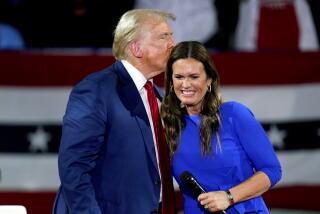Trial Over ’84 ‘Greenmail’ of Disney Begins
A Los Angeles County Superior Court jury heard conflicting accounts Monday of why Walt Disney Co. directors bought out raider Saul P. Steinberg in 1984.
The differing versions came in opening arguments in a class-action lawsuit by some Disney stockholders, spearheaded by stock market professionals, against Steinberg, the company and directors.
The shareholders are seeking unspecified damages related to the plunge in Disney’s stock price after the Burbank-based film and theme-park company bought Steinberg’s 11% stake in the company at above-market prices, resulting in a $59-million profit for Steinberg. While held under court order in a special fund, the money has grown to about $100 million with interest.
The varying interpretations of the events of five years ago provided trails leading in a number of different directions.
Described as Farsighted
The stockholders contend that the 1984 Disney board was acting in its own self-interest and was unfaithful to shareholders in paying Steinberg at the expense of shareholders. Their attorney, J. Michael Hennigan, wanted to use the expression “greenmail” to describe the above-market-value payment in his opening statement since it was used in court papers, but Judge Abby Soven would not permit it.
An attorney for the directors described the board as farsighted and wise in warding off a hostile takeover and a breakup of the company.
And the interpretation from Steinberg’s corner was of feisty and resourceful directors virtually strong-arming the raider into selling his stock. That view was offered by Arthur L. Liman, a New York attorney for Steinberg who became nationally recognized in representing the Senate in the Iran-Contra hearings.
The attorneys all have the task of reconciling their versions of events to such facts as the board’s decision to seek the resignations of Disney’s top officers shortly after the buyout. Roy E. Disney, nephew of the company founder, rejoined the board afterward and helped bring in the Michael D. Eisner management team, which has been behind the company’s soaring profits.
The parties did generally agree that Disney is a company with a unique place in American culture. Therefore, they contend, its brush with nearly being dismantled is seen as likely to be of more than routine public interest.
Hennigan told the jury that “one of the most feared raiders on Wall Street extracted” his gains by threatening a takeover.
Steinberg was aided by a then-unprecedented agreement with investment banker Drexel Burnham Lambert to avoid helping anyone take over Disney for two years, the lawyer added. Drexel, which acted as financial adviser to Steinberg’s Reliance Insurance and related firms, is a defendant in the case, along with Disney’s investment banker, Morgan Stanley & Co.
Eisner Team Not Criticized
Hennigan made it clear to the jurors, who said during their selection that they had enjoyable visits to Disneyland, that he was not criticizing the Eisner management at Disney.
He said that during the reign of Ronald W. Miller, former chief executive, market professionals saw the company as undervalued. The lawyer added that this is “a nice way of saying mismanaged.”
Michael Diamond, attorney for the individual Disney defendants, told the jury that the directors exercised their best judgment in the Steinberg affair. The evidence will show they were correct and that this benefited the company and stockholders who held on to their stock, he added.
While conceding that all was “not perfect” at the company in 1984, Diamond said the board had a five-year plan to develop the firm and was able to “save the company.”
Liman portrayed the Disney directors as being far from the image of caving in to Steinberg. Rather, he said, the board “played hardball” and blocked his client by aggressive means. The culmination, he said, was the board’s threat to have the company mount an offer for its stock that would make it almost inoperable if Steinberg resisted.
He said the emissary who carried the message to Steinberg was one of his friends, Laurence A. Tisch, presently CBS president and chief executive. That, said Liman, was when Steinberg gave up and met Disney’s demands.
More to Read
The biggest entertainment stories
Get our big stories about Hollywood, film, television, music, arts, culture and more right in your inbox as soon as they publish.
You may occasionally receive promotional content from the Los Angeles Times.










